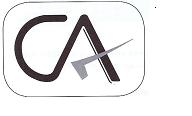IAS 1 requires “a
complete set of financial statements” defined (in para 10) as comprising of:
· A statement of financial position
as at the end of the period SOFP.mht;
A Statement of comprehensive income SOCI.mht
· A statement of changes in equity for the period SOCIE.mht;
· A statement of changed in cash flows for the period;
· Notes, comprising of a summary
of significant accounting policies and other explanatory information
An entity shall
not describe financial statements as complying with IFRS unless they comply with all the requirements of IFRS’s
Virtually in all
cases an entity achieves a fair presentation by compliance with applicable IFRS’s . Further a fair presentation requires
selection of accounting policies in accordance with IAS 8 ,
apart from general principles “of presenting information in a manner that provides relevant, reliable, comparable and
understandable information.
Statement
of comprehensive income (SOCI)
An
entity can present all items of incomes and expenses in either:
·
A single comprehensive statement; or
·
Two statements – First displaying components
of profit or loss, Second beginning with profit / loss and displaying other comprehensive income.
As
a minimum SOCI shall include line items presenting amounts for the period
·
Revenue
·
Finance costs
·
Share of profit or loss of associates and
JV’s using equity method
·
Tax expense
·
Post tax profit or loss of discontinued operations
·
Profit or loss
·
Each component of other comprehensive income
classified by nature
·
Share of comprehensive income of associates
and JV’s using equity method
·
Disclose separately profit attributable to
– non-controlling interests and owners of parent
No items of income or expense shall be presented as extraordinary items.
The analysis of expenses and revenues shall be presented using classification either based on there nature or function
whichever provides more reliable and relevant information.
SOCIE
Statement
of changes in equity shows:
·
total comprehensive income for the period,
showing separately the total amounts attributable to owners of the parent and to non-controlling interests;
·
for each component of equity, the effects
of retrospective application or retrospective restatement recognised in accordance with IAS 8; and
·
for each component of equity, a reconciliation
between the carrying amount at the beginning and the end of the period, separately disclosing changes resulting from:
(i) profit or loss;
(ii) each item of other comprehensive income; and
(iii) transactions with owners in their capacity as owners, showing separately contributions by and distributions to
owners and changes in ownership interests in subsidiaries that do not result in a loss of control.
An
entity shall present, either in the statement of changes in equity or in the notes, the amount of dividends recognised as
distributions to owners during the period, and the related amount per share.
SOFP
As a minimum, the
statement of financial position shall include line items
· property, plant and equipment;
· investment property;
· intangible assets;
· financial assets (excluding amounts shown under (e), (h) and (i));
· investments accounted for using the equity method;
· biological assets;
· inventories;
· trade and other receivables;
· cash and cash equivalents;
· the total of assets classified as held for sale and assets included in disposal groups
classified as held for sale in accordance with IFRS 5 Non-current Assets Held for Sale and Discontinued Operations;
· trade and other payables;
· provisions;
· financial liabilities (excluding amounts shown under (k) and (l));
· liabilities and assets for current tax, as defined in IAS 12 Income Taxes;
· deferred tax liabilities and deferred tax assets, as defined in IAS 12;
· liabilities included in disposal groups classified as held for sale in accordance with
IFRS 5;
· non-controlling interests, presented within equity; and
· issued capital and reserves attributable to owners of the parent.
Additional line
items shall be presented if relevant to an understanding of the entity’s financial position.
Not classify deferred
tax assets (liabilities) as current assets (liabilities)
Current/non-current
distinction
Separate classifications
current / non-current shall be presented except when presentation based
on liquidity provides
reliable and relevant information
Entity classifies
an asset as Current when:
· it expects to realise the asset, or intends to sell or consume it, in its normal operating
cycle;
· it holds the asset primarily for the purpose of trading;
· it expects to realise the asset within twelve months after the reporting period; or
· the asset is cash or a cash equivalent (as defined in IAS 7) unless the asset is restricted
from being exchanged or used to settle a liability for at least twelve months after the reporting period.
Entity shall classify
all other assets as non-current.
Operating cycle
of an entity is the time between the acquisition of assets for processing and their realisation in cash or cash equivalents.
Entity shall classify
a liability as current when:
· it expects to settle the liability in its normal operating cycle;
· it holds the liability primarily for the purpose of trading;
· the liability is due to be settled within twelve months after the reporting period; or
· the entity does not have an unconditional right to defer settlement of the liability for
at least twelve months after the reporting period.
An entity shall
classify all other liabilities as non-current.

